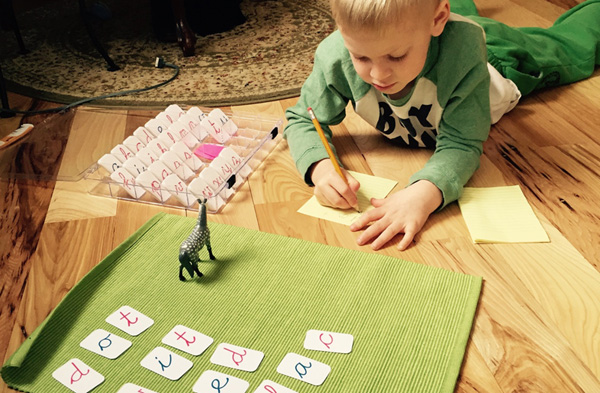
Ever experienced the joy on the face of your children when they successfully manage to point or name something out? Yes, then you may well be aware of the joy of labelling items? A lot of children have an early exposure to this activity which enhances their experience of learning. Here at Milton Montessori, children spent practising writing one letter at a time and sounding out the word for every object they see.
Typically this activity comes down to three fundamental activities:
- As a vocabulary builder
- As a tool for practising handwriting
- As a way to connect letter symbols with their sounds
The goal is to create an environment in which the children are immersed on a daily basis in these three aspects of spoken and written language. In addition to the labelling, the children work with vocabulary cards, explore language through conversations with each other and the guides, hear and tell stories, and play sound games day in and day out. Through these activities, children begin to discriminate letter shapes and letter sounds. They learn what sound they hear in the beginning, middle and end of a word, and they begin to recognise that each word is made up of these sounds.
Here’s how the use of labelling helps in enhancing vocabulary and handwriting
From sound work, children begin building words with the movable alphabet. The moveable alphabet is the first place the child will “write” in the children’s house. Children will typically write before they can read due to the physical connection between the hand and the brain. Writing brings together many aspects of the child’s previously acquired knowledge. Vocabulary, distinctive sounds that make up the words, the symbols for the sounds of the words, and the accumulation of those sounds into words with meaning. It can seem a little heavy, but truly the child is learning to express and communicate as a part of society at the highest level. Considering the nature of children, they are thrilled and excited to write with joy and enthusiasm!
Once a child is aware of some basic letters, including vowels, they can begin creating words with the movable alphabets. The cursive letters of the movable alphabet offer a fluidness that makes it easier to connect the individual letters into words
Labelling Builds Confidence in Children
As the child gains confidence with the movable alphabet, they will then be able to use a chalkboard to write, which is later transitioned to using paper. To encourage children to further hone their skill, guides will have them use and write labels to describe their environment, materials or topics they are already familiar with. The more the child is inspired to write from his knowledge and imagination, the more he will perfect that skill. It is incredible to see the joy in a child when his thoughts are transformed by his hand into words another person can read and understand.
Studies suggest that children in a Montessori environment learn to read and write phonetically first, learning the sound for the letter symbol instead of the name of the letter. This leads to an easier exposure into reading. Sight words and rules of the English language are presented and learned quickly in the Children’s House too but do not be alarmed or concerned if the spelling is not correct in the initial phases of these activities. As it stands, the purpose is to encourage a child to explore the new activities and learn from them. Simply encourage the writing.
It’s a known fact that not everyone agrees with the Montessori philosophy, so if you are wondering if Montessori is a good fit for your family, don’t take our word for it. Try to read more about the Montessori philosophy: what it stands for, how it operates and what makes it distinctly unique. To give you a head start here is an argument brought forward by many experts: the current educational system is built on old fundamentals and economic dynamics, which is why they have become outdated to instil the self-directed initiative and flexibility to adapt to students. Don’t believe the above argument? Sir Ken Robinson in his most prevalent TED Talk points out the process of how schools kill the creativity in a child. He further contends that to flourish in the post-mechanical 21st-century economy, the most vital abilities are self-coordinated activities and social knowledge. This method is particularly valid for the most desired lucrative employments in our insight based economy.
